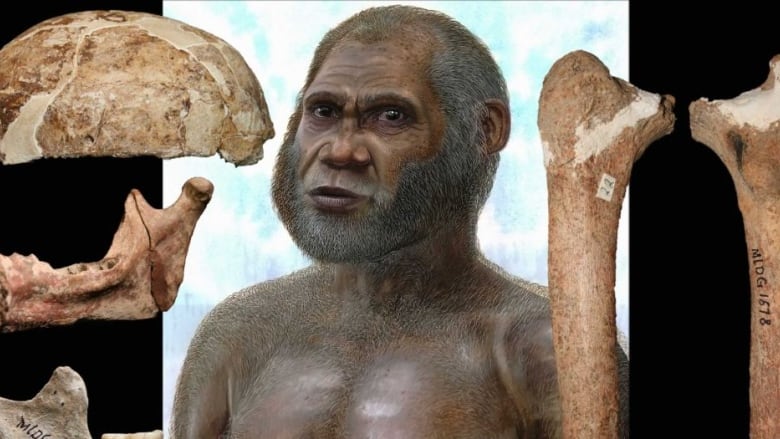Red Deer Cave thigh bone suggests prehistoric humans survived until recently
14,000-year-old thigh bone from China resembles prehistoric human ancestors from Africa

An ancient thighbone from southwest China provides more evidence prehistoric humans walked mainland Eurasia at the same time as modern humans, researchers say.
Their analysis of a 14,000-year-old partial thighbone, recovered from Maludong (meaning Red Deer Cave) in Yunnan Province in 1989, is reported today in the journalPLOS ONE.
It follows a 2012 analysis by the team of skull bones from Maludong and another site in China, that led to their first suggestion of the existence of theRed Deer Cave people.
We don't pretend for a moment that our ideas aren't pushing the envelope.-Dareen Curnoe, University of New South Wales
The thigh bone consists of the upper half of a femur and lacks the head that would form the hip joint, said Darren Curnoe, an associate professor from the University of New South Wales, who led the research with Ji Xueping, a professor from the Yunnan Institute of Cultural Relics and Archaeology.
Despite the young age of the bone, the researchers argue their analysis of 15 of its traits suggests it comes from a human with "primitive anatomy."
"This is a thighbone that is very different to modern humans," Curnoe said.
Small, knock-kneed
While not sure, his colleagues believe it came from a pre-modern human that looked like it might have lived in Africa or Asia about 1.5 million years ago.
- Homo habilis, erectus were the same species, study suggests
- Ancient human relative's DNA puzzles scientists
Curnoe said the thighbone likely belonged to an individual who weighed about 50 kilograms and walked quite differently to modern humans.
"It may have been a bit more knock-kneed when it was walking," he said.

It had generally been believed the last surviving prehistoric humans on mainland Eurasia the Neanderthals of Europe and another group called the Denisovans from southern Siberia died out soon after modern humans arrived.
- Ancient human with close Neanderthal ancestor found in Romania
- Denisovans: Ancient teeth reveal more about mysterious human relatives
But the thighbone analysis suggests prehistoric species of humans roamed the same landscape as modern humans in China for about 60,000 years.
"We don't pretend for a moment that our ideas aren't pushing the envelope," Curnoe said.
He said the bone was unlikely to be from a diseased modern human as there was no sign of disease and the combination of features seen in it had never been seen before in humans.
Possibly Denisovan
It is possible the bone could be Denisovan, said Curnoe, but given so few Denisovan bones have been found, this idea would be impossible to test.
Alternatively, the bone is from a new species altogether, he said.
Curnoe said Red Deer Cave people were more modern-looking than the "hobbit" from Flores, but may have evolved in similarly isolated conditions in the tropical forests on the edge of the Himalayas.
Another idea is that some of them could be hybrids between modern humans and a more archaic species.
Colin Groves, a professor from the Australian National University's School of Archaeology and Anthropology said the incomplete nature of the thighbone may explain why it looks so primitive.
However, he said overall the bones from Maludong present a picture of a human that was not a modern human.
"It is a strange mixture of derived features of modern humans with features that are very archaic," Groves said.
"The features, as a whole, are outside the range of Homo sapiens," he said. "It's convincingly different."
However, Maciej Henneberg, a professor at the University of Adelaideand an expert in human anatomy and human evolution, said the images, descriptions and analysis provided in the paper are "unconvincing".
"I'm not certain this bone belongs to a primate," he said. "It may be a deer's femur."
He said it was also not clear how representative the bone being analysed is of the original bone. For example, he said it is possible degradation over time may lead to misinterpretations of anatomy, such as where muscles were attached.
"Evidence is insufficient to draw such far-reaching conclusions such as the existence, only about 14,000 years ago, of a separate species," Henneberg said.
DNA analysis of the fossils would help settle who the mysterious Red Deer Cave people are, but so far that evidence has proved elusive.
Curnoe said one attempt had already been made to isolate DNA from the bones at Maludong, however this had failed.
He said another attempt was currently underway in China.












_(720p).jpg)


 OFFICIAL HD MUSIC VIDEO.jpg)
.jpg)



























































































